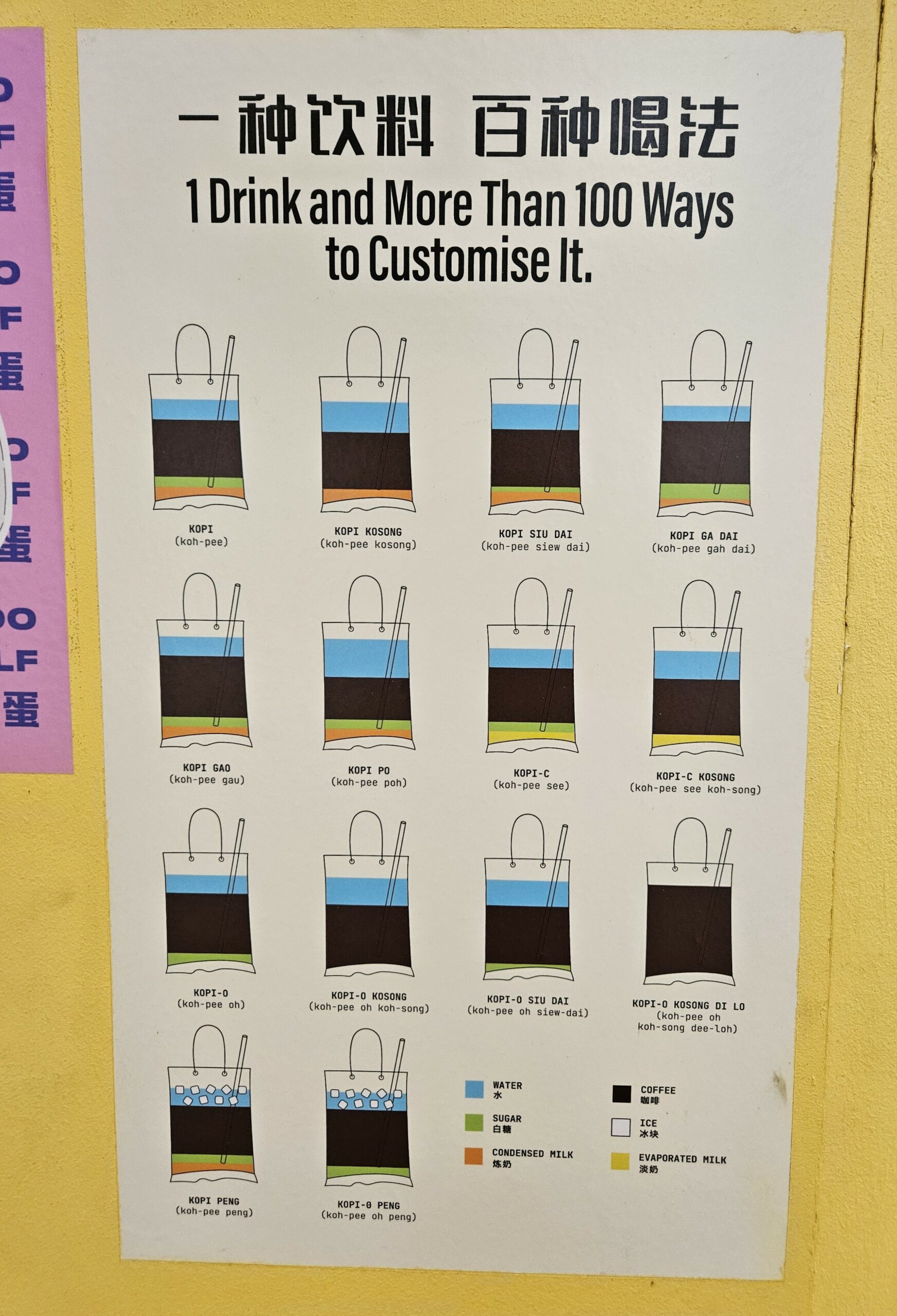Part of Singapore’s iconic breakfast, Kopi has become a staple of local culture. However, for foreigners, understanding how to order it can feel like a mystery. The differences from our typical coffee and the specific words used to order it can be confusing. So I’m sharing everything I’ve learned since arriving in Singapore to give you the best Kopi guide!
What is Kopi ?
The first thing I thought when I discovered Kopi was that it was simply the local word for coffee. Later, I realized that Kopi is actually very different from coffee. So let me explain what Kopi really is.
First, where does the word “Kopi” come from? Kopi comes from Malay and directly means coffee — so I wasn’t too far off at first! However, its preparation is quite different from our usual espresso.
Today, most coffees are prepared with Arabica beans, grown mainly in Ethiopia. Kopi, however, is made from the second most common beans: Robusta. These beans are grown in countries much closer to Singapore, like Vietnam. So even from the beans alone, the difference is already there. Still, Robusta can be used in espresso, so why does the taste remain so different?
To understand this, we have to go back in time to Singapore’s opium history. Since opium smokers had dry mouth and a dulled sense of taste the beans needed a sweeter flavor. So when the Robusta beans were roasted, butter and sugar were added to enhance taste and aroma.
On top of this unique roasting style, Kopi is served in a completely different way from espresso. Instead of drinking it as a shot, Kopi is usually mixed with condensed milk, adding sweetness and a milky texture.
If this is the usual way of ordering it, why are there so many variations ? Now that you have a clear view of the core differences, let me explain.
Ordering your Kopi like a pro
Another thing to know about Kopi is that it uses specific words coming from Southern Chinese dialects like Hokkien and Hainanese. Since many early Chinese immigrants in Singapore came from the Nanyang region these dialects blended into everyday speech.
Let’s start with Kopi’s truest form: a hot cup of coffee mixed with condensed milk.
If you don’t want condensed milk, you can order:
- Kopi-O : No Milk – O refers to “black” in Hokkien
- Kopi-C : Evaporated milk – C refers to “fresh” or “diluted” in Hainanese
Then you can choose the thickness or strength of your kopi :
- Po : More water – Po means “thin” in Hokkien
- Gao : Less water – Gao means “thick” in Hokkien
- Dilo : Undiluted – Dilo means “pour all the way” in Hokkien
You can also choose the level of sweetness :
- Ga Dai : More sugar – Ga Dai means “add sugar” in Cantonese
- Siu Dai : Less Sweet – Siu Dai means “less sugar” in Cantonese
- Kosong : No sugar – Kosong means “zero” or empty” in Malay
Final step, if you don’t want your Kopi hot, you can order :
- Peng : “Iced” in Hokkien
- Pua Sio : “Lukewarm” in Hokkien

There it is, you now have everything you need to order your Kopi ! So let me give you a few examples of what Kopi orders can look like:
- Kopi C Siu Dai Peng
- Kopi O Gau Kosong Pua Sio
- Kopi Po Gah Dai Pua Sio
I’ll let you guess what these orders mean using my Kopi guide but you can also check out this website to help you out !
Teh
If you are less of a coffee person and more of a tea lover, don’t worry these local terms can also apply to “Teh” orders ! “Teh” also comes from Hokkien, so at least you won’t feel lost when your order your tea !
I hope this Kopi guide was useful and that you will be able to order your Kopi perfectly next time you visit Singapore !
And if you don’t know what to see on your first visit, have a look at my Singapore travel guide!
